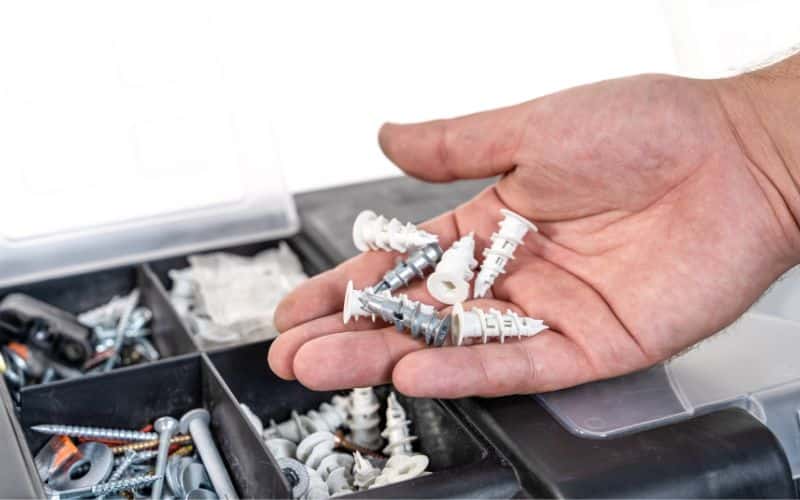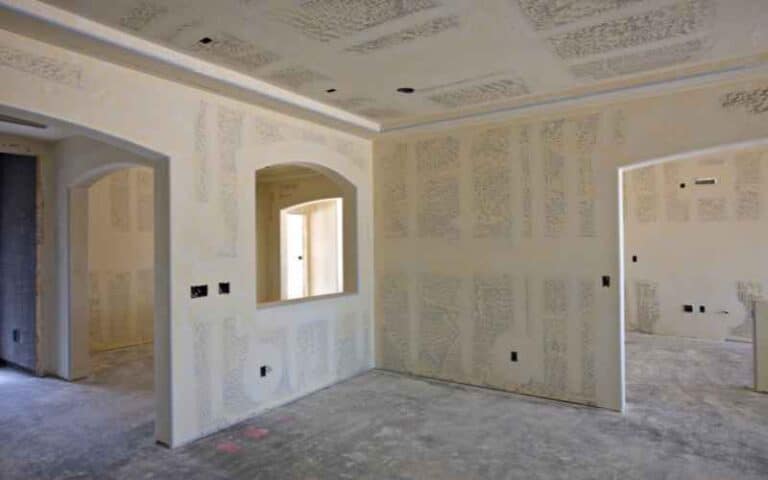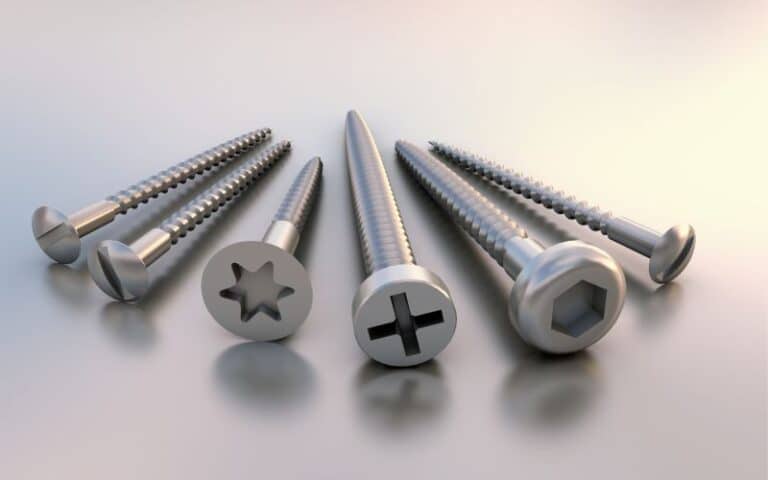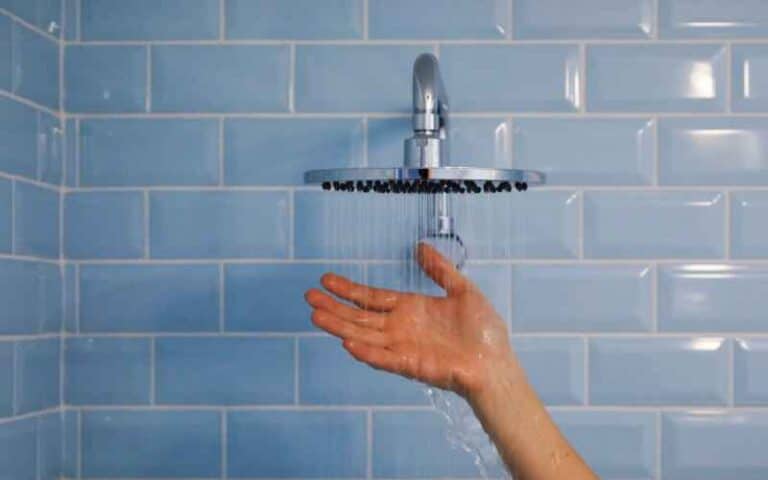As a home or office owner, there is always the possibility that you would want to hang things at certain corners in your home or office.
These could range from pictures to decorative artworks and other lightweight materials, such as a vision board.
With this in mind, you should look out for the best drywall anchors you can find, especially because not all drywall anchors are durable.
This article is a friendly guide to spotting the worst of them.
The worst drywall anchors to use are the heavy-duty toggle bolts, no drill anchors, and the ribbed plastic anchor. Typically, they can only withstand 107 – 110 Ibs, 50- 55 Ibs, and 29 – 48 Ibs weights respectively. However, even if they hold your weight, their carrying capacity is minimal, so they would rip off your drywall in the long run.
In this article, I will outline the worst drywall anchors and anchors that can ruin drywall. By the end, you’ll also know the best drywall anchors you should use on your ceiling.
Ready for a Drywall Quiz?
What Are the Three Worst Drywall Anchors?

When choosing the best drywall anchor, customer reviews and reports come in handy since most reviews come from people who have used such products before.
However, you can always consult a professional if customer reviews don’t work for you and you still find it difficult to spot the worst drywall to use in your home or office.
On the flip side, this article has all the information you need to spot the worst drywall that would not last you a long time or even serve its installation purpose.
Here is a list of three drywall anchors you should avoid.
- Heavy-duty toggle bolts,
- No drill anchors and
- Ribbed plastic anchors
#1. Heavy Duty Toggle Bolt
One of the major downsides of installing a heavy-duty toggle bolt is that once installed, you may not be able to remove it from that spot.
Since drywalls are breakable materials, if you attempt to remove displaced anchors, it could damage both the drywall and the bolt.
Unfortunately, heavy-duty toggle bolts are one of the most wrongly installed drywall anchors due to their complicated design.
Once destroyed, you may be unable to retrieve the bolt or restore it to its butterfly-shaped prongs. They are non-reusable drywall anchors.
Also, on rare occasions, a toggle bolt may break inside the hole; Hence, if you must use a toggle bolt, ensure you install it using the appropriate tools and equipment.
Another factor that qualifies heavy-duty toggle bolts as one of the worst drywalls is their weight limit which is about 50 to 200Ibs, whereas most anchors hold much more weight than this.
Basically, professionals recommend Toggle bolts for heavy-duty equipment. However, due to the variation in bolt sizes and capacity, not all of them are suitable for heavy equipment.
Unfortunately, you may need to test each bolt to get the perfect fit for your wall, which is time-consuming and exhausting.
#2. No-Drill Anchors
The No-drill anchors come in two varying sizes, which are the large and small sizes. Even though they seem like a good anchor for your drywall, they have some shortcomings.
Firstly, due to its no-drill feature, you can not retrieve or restore them if you mistakenly hammer them in.
Also, they have a low weight capacity of 50 – 55 pounds, meaning you can only use them effectively on light-weight objects.
Finally, No-drill anchors require excessive hammering to stay in place; when this hammering gets done, it could cause a lot of damage to your drywall and may even result in breakage.
#3. Ribbed Plastic Anchors
The ribbed plastic anchors come in varying sizes, colors, and shapes. Ideally, their design makes them perfect for holding only light materials.
However, due to their sizes, they are more likely to fail than any other drywall anchor out there, especially due to the bolt’s probability of wiggling around inside the hole when you drill them in.
Also, ribbed plastic anchors like the KURUI Ribbed plastic anchor come in three colors ranging from blue, yellow, and gray.
Interestingly, these colors also vary in size, so you can choose the perfect size for each item you want to hang.
When installed, they drill about an inch into the drywall, which is quite small compared to other anchors. After installation, these anchors have a very low weight capacity.
Hanging a heavy item on them will increase their likelihood of pulling out.
Pulling out damages their walls by facilitating cracks and rough patches. It eventually results in drywall breakage.
Additionally, unlike other anchors with more sturdy materials, ripped anchors are plastic products. This makes them prone to breaking during the drilling process and cutting.
If you must use ribbed plastic anchors, ensure that the purpose is either short-term or the item you hang on them is light weighted.
Below is a table showing the weight capacity of the different ribbed plastic anchors according to their colors.
| Color | Weight Capacity |
|---|---|
| Blue | 48 Ibs |
| Yellow | 40Ibs |
| Grey | 35Ibs |
Which Drywall Anchors Ruin Drywall?
The heavy-duty toggle bolts, No drill anchors, and ribbed plastic anchors can ruin drywall. These anchors may eventually make the wall useless.
As I mentioned earlier, to determine the best drywall anchor for your drywall, there are some key factors you must have to consider.
For example, the weight capacity of drywall anchors varies according to their sizes, structural integrity, and the materials they are made with.
Additionally, the type of installation also determines the adequacy of a particular anchor. The perfect anchor depends on the efficiency of the installation process.
For instance, while a hammering anchor can work for a lightweight item, continuously hammering it in could result in a tear. One such anchor is the ribbed plastic anchor.
Another factor you should consider is the support your anchor will need. Open-ended anchors are better fitted in place when you screw them in.
The other drywall anchors come with reusable designs. You can reuse them even after you pop out the tips.
At the same time, the hole size your drywall creates after installation is also important. Ensure that any drywall you choose can create at least a ¾ hole.
Other factors you should consider include:
- The anchor screw size.
- Weight rating.
- Load evaluation safety.
- The clamping force required for your load to stay featured on the wall.
However, if you must use these drywall anchors, ensure that you contact a professional to help you install them properly to minimize the chances of damage.
Which Drywall Anchors Pull Out Easily?
The ribbed plastic and heavy-duty toggle bolt anchors are more likely to pull out of place than any other anchor.
One of the major reasons why your drywall anchor will pull out is due to excess weight.
For example, a small-sized ribbed plastic anchor cannot carry more than 50 lbs. If you subject the anchor to weights above its capacity, it will pull out.
Also, a drywall anchor will pull out if you install it incorrectly. The No- drill anchor falls under this category.
The installation process requires skill and patience. This anchor will ruin your project if you don’t install it correctly.
Another reason your drywall anchor will pull out is if you drill or hammer it halfway. Always ensure that your anchor fits snugly.
It would be best to confirm the fit of the anchor before using it for your drywall project.
What Drywall Anchors Are Bad for Ceilings?
The drywall anchors I mentioned before are all bad for ceilings. Their performances on ceilings aren’t different from those of drywalls.
Nonetheless, you must look out for some factors when choosing a drywall anchor for ceilings.
When installing drywall anchors on the ceilings, you should be extra careful so that you don’t choose the wrong anchor.
Some of the major things you must look out for are the size of your anchor, load evaluation, weight rating, and clamping force.
However, you should also look out for the type of installation, the durability of the anchor, and the type of support the drywall anchor needs to stand firmly in place.
Drywall anchor installation on the ceiling is easier than choosing an anchor for your drywall.
Nevertheless, avoid choosing these anchors when you are stuck deciding on the best anchor you should use for your ceiling.






